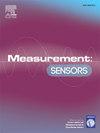Enhancing teaching of FMCW radar sensors by means of dedicated simulation tools
Q4 Engineering
引用次数: 0
Abstract
Simulation tools for Frequency-Modulated Continuous-Wave (FMCW) radar technology present a transformative approach in teaching and educating engineers and students about FMCW Radars. By emulating real-world scenarios, these tools offer a hands-on experience in understanding and optimizing radar systems, without the high costs associated with physical prototypes. The ability to simulate various environmental conditions, including interference and noise, allows learners to experiment with different radar parameters such as antenna alignment and operating frequency. This interactive learning environment accelerates the comprehension of complex radar concepts, from the Doppler effect to signal processing techniques, facilitating a deeper understanding of FMCW radar operations. As a teaching example, we propose and compare the simulation results of two radars with different radar parameters and antenna configurations. Additionally, we discuss how the standalone simulation results can be integrated and utilized as inputs for other tools using co-simulation approach. Based on this example, the advantages of using simulation for education are explored, and the reliability of the simulation is evaluated by comparing it with the results from a real radar.
利用专用仿真工具加强FMCW雷达传感器教学
调频连续波(FMCW)雷达技术的仿真工具为FMCW雷达的教学和教育工程师和学生提供了一种变革性的方法。通过模拟真实世界的场景,这些工具提供了理解和优化雷达系统的实践经验,而无需与物理原型相关的高成本。模拟各种环境条件的能力,包括干扰和噪声,允许学习者实验不同的雷达参数,如天线对准和工作频率。这种交互式学习环境加速了对复杂雷达概念的理解,从多普勒效应到信号处理技术,促进了对FMCW雷达操作的更深入理解。作为教学实例,我们提出并比较了两种不同雷达参数和天线配置的雷达的仿真结果。此外,我们还讨论了如何使用联合仿真方法集成独立仿真结果并将其用作其他工具的输入。在此基础上,探讨了仿真教学的优势,并通过与实际雷达仿真结果的比较,对仿真的可靠性进行了评价。
本文章由计算机程序翻译,如有差异,请以英文原文为准。
求助全文
约1分钟内获得全文
求助全文
来源期刊

Measurement Sensors
Engineering-Industrial and Manufacturing Engineering
CiteScore
3.10
自引率
0.00%
发文量
184
审稿时长
56 days
 求助内容:
求助内容: 应助结果提醒方式:
应助结果提醒方式:


